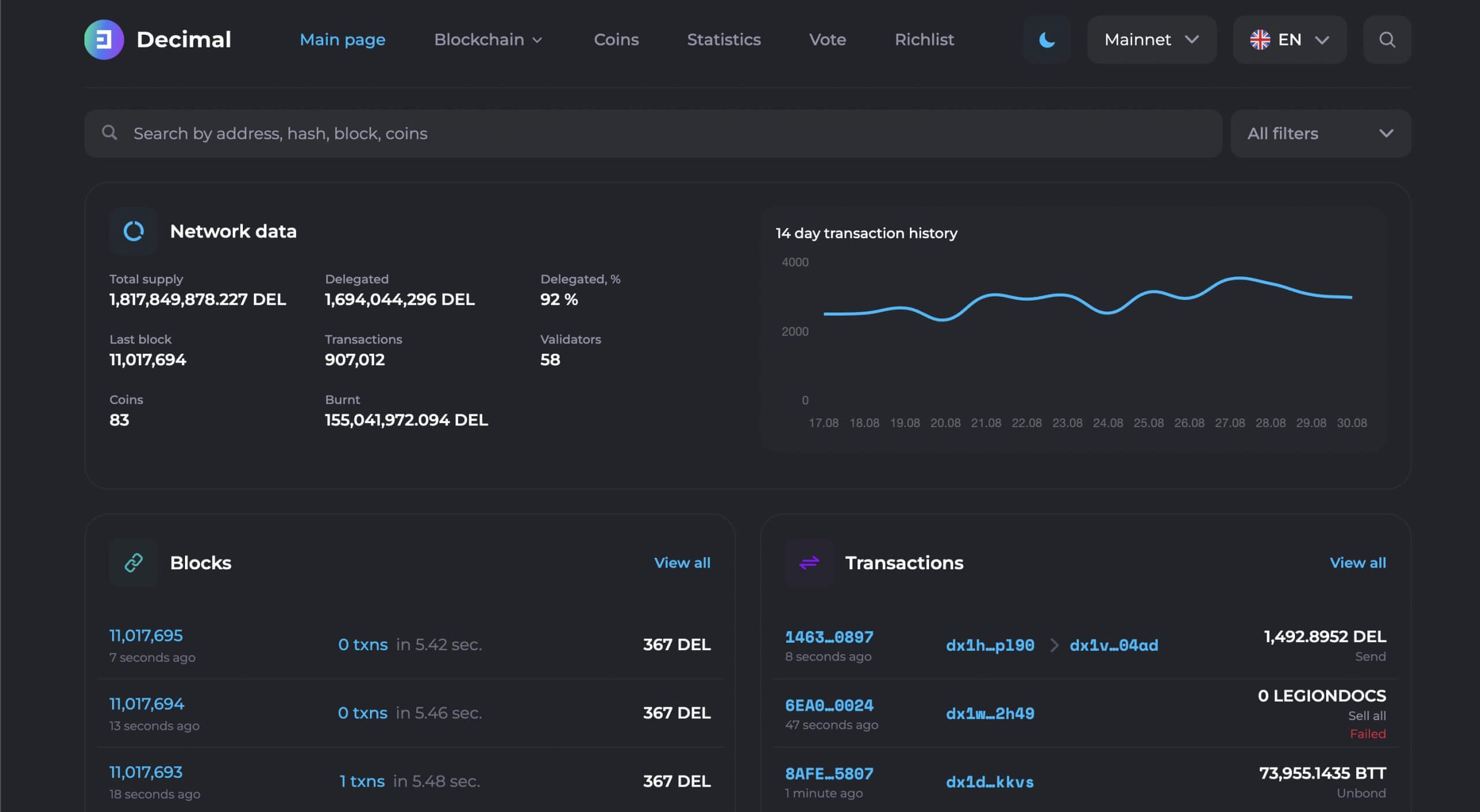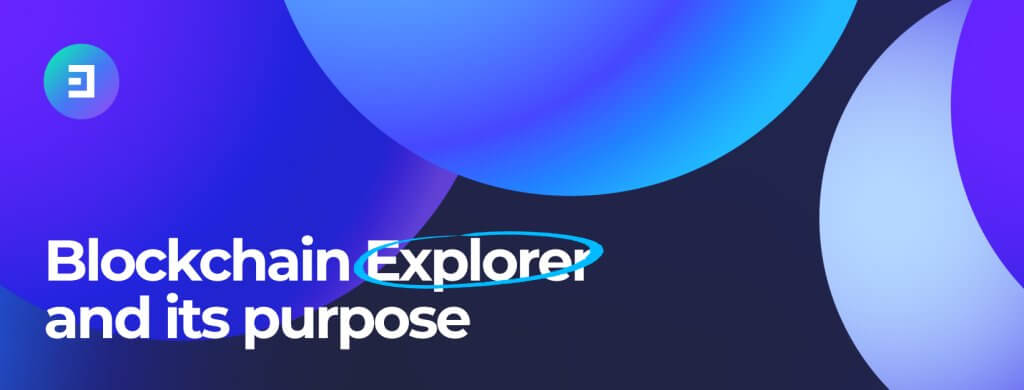Blockchain Explorer is Your Desktop Tool in the Crypto World
Before proceeding to the topic, it is necessary to consider some general concepts about crypto assets and blockchain technology, sufficient to facilitate the learning process.
Almost all cryptocurrencies, from Bitcoin to Ethereum, including EOS and Cardano, owe their functioning to the blockchain. Blockchain allows you to constantly register transactions and is therefore of vital importance.
According to the information provided by Coinmarketrate.com, Blockchain is a technology that uses cryptography to record data about transactions occurring on the network. It can be similar to an immutable, distributed, decentralized and secure ledger. One that allows a user who has access to the Internet to get transparent and incorruptible access to it.
Anyone who has a blockchain browser is able to check the balance of the public address and view all the details of all transactions that have been conducted on the blockchain. Therefore, it is an important software for everyone who wants to interact with the blockchain.
Blockchain Explorer
Blockchain explorer is a website or a tool that makes it possible to navigate through blocks, gaining access to wallet addresses, checking network hashrate, transaction data and other key points of the blockchain. In a word, it is a search tool.
Let’s draw a parallel with Internet browsers that allow us to view and study information on the Internet. Instead, blockchain browsers are used to check what is happening in the blockchain.
All cryptocurrencies that have a blockchain have a blockchain browser, which means that if we want to explore a specific cryptocurrency, we have to do it in a specific browser. If we want to see the Ethereum or Cardano Blockchain, we can’t do it with the Bitcoin explorer, each digital currency has its own one that knows how to interpret the structures of each blockchain.
Which types of Blockchain Explorer Exist
We already know that it is impossible to use the same blockchain explorer for all blockchains, so below is a list of the most commonly used for the most popular cryptocurrencies:
- On the DecimalChain network:

To get detailed instructions, just follow the link:
https://explorer.decimalchain.com
- Bitcoin:
https://blockexplorer.com/
https://www.blockchain.com/explorer
https://live.blockcypher.com/btc/
https://btc.com/
- Ethereum:
https://www.etherchain.org/
https://etherscan.io/
https://ethplorer.io/
- Ripple:
https://bithomp.com/explorer/
- Litecoin:
https://live.blockcypher.com/ltc/
https://chainz.cryptoid.info/ltc/
https://blockchair.com/litecoin
- EOS:
https://bloks.io/
https://eospark.com/
https://eostracker.io/
- Bitcoin Cash:
https://explorer.bitcoin.com/bch
https://bitcoincash.blockexplorer.com/
- Stellar:
https://stellarchain.io/
https://stellarscan.io/
In any case, if you are looking for a certain cryptocurrency explorer that you cannot find in the list, just Google «block explorer» plus the name of the cryptocurrency and that’s it, you have several options.
How to Use a Blockchain Researcher
Since it is somewhat difficult to explain how all these researchers work, we will focus only on one thing, in particular, Bitcoin. The main thing is that you understand their basics, because they do not differ much from each other, only in the way information is displayed.
In this particular case, we will focus on blockchain.com.
Recent blocks and transactions
The first thing we find when we enter one of them is information, for example, about the latest blocks and transactions ready to be added to a new (not yet confirmed) chain.
The miner solves the problem of proving the operation of the block, it is added to the rest of the chain, and the explorer allows us to see this data in real time (Bitcoin miners). Each explorer can show different data about blocks, but the most common is the representation of the number (Height), how long ago it was added (Age), the transactions included in it (Transactions), the mining group that added the block (Miner) and the size (Size).
Something similar happens with transactions waiting to be added, where we see the hash (Hash of the transaction), the time during which it is there (Age), the number of coins (Amount BTC) and the amount, but expressed in fractions (Amount USD).
Block and all its transactions
Information about transactions and blocks is almost the same in all browsers. Some may find out about the new block before other researchers, but that’s because they got this information earlier.
While this may be of interest to some people, others may want to delve into other details included in it. Just click on the block number and a page with more detailed data will open. If we know the number, but it is not on the home page, we can enter it into the search engine, as well as any other data, such as a hash or transaction number, to find out specifically this information.
Now you have more data about the block from the researcher, thereby providing you with interesting information. Most of these services show a block and transaction summary:
- Number of transactions
- Number of coins sent
- Volume
- Commission fees
- Block number
- Date and time
- Time of receipt
- Mining pool
- Complexity
- Bits
- Size
- Weight
- Version
- Nonce
- Award
Below this data summary are the transactions included in it. In this case, we have the opportunity to see the addresses and IDs of each transaction separately, as well as the number of coins sent and the date.
Navigating the Blockchain
Like the blog we read every day, the browser allows us to navigate through all the interconnected information. Thus, we can click on the addresses and see information about the wallets or on the hash of the transaction and see detailed information about the transaction. From here we can continue browsing by clicking on any link we are interested in.
Network information
But there are other types of information of interest that are not related to transactions or the blockchain as such, but to the blockchain as a whole. As always, each explorer decides for himself what it wants to show, although some tend to show more than others, we can find common data.
- Price
- Hashrate
- Complexity
- Daily transactions
- Average cost of transactions
- Average commission
- Unconfirmed transactions
- Mempool
Genesis Block and the wealthiest wallets
Blockchain explorers also allows you to search for a specific block. For example, we can see the first block, also called genesis, mined in 2009. On it we can get access to all the above-mentioned information, which is historically very interesting.
We just need to enter «1» in the search bar to get directly to it:
Finally, some researchers, such as bitinfocharts, offer information about the wallets that hold the largest amount of BTC, as well as a large selection of data on the total number of coins from those who have the most, and other questions that are, to put it mildly, curious.
